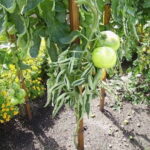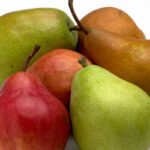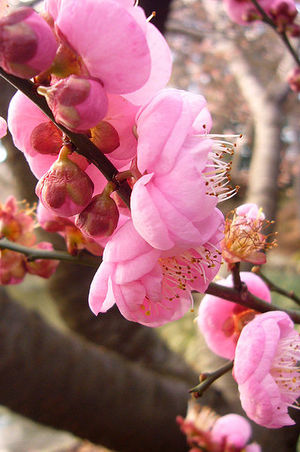Blossom end rot is not a disease caused by bacteria, fungi, or viruses, but is a problem related to moisture stress, fertility and available calcium. Although there appears to be some difference in susceptibility between varieties, there is no large-fruited tomato variety that will not develop the problem if environmental or cultural conditions develop that are suitable.
Small-fruited tomatoes, such as plum, pear, and cherry tomatoes have little tendency to develop this problem. Most often gardeners find blossom-end rot appears on the early set of tomatoes that started development under relatively cool, moist conditions. The first beat wave of summer, which also causes more rapid moisture loss from the plants, creates moisture stress within each plant that can lead to the appearance of blossom rot on existing green tomatoes.
Under careful observation, the first sign of blossom-end rot on a developing tomato fruit is a small water soaked spot at or near the center of the tomato where the blossom had originally been held. It is in part a collapse of tissue in an area of the fruit that contains young, developing plant cells. These cell walls may be weakened due to a lack of available calcium. Under moisture stress these cells begin to collapse. Gradually, as the tomato grows, this tissue dies and the dead area becomes larger, blackened, and slightly depressed.
One of the ways to combat the problem is to insure uniform soil moisture to reduce water stress within the plant. Plants must be able to get adequate water during hot weather to prevent wilting. Even fairly short periods of wilting may allow the formation of blossom-end rot on some, but not all, of the young tomatoes that are present at the time.
Gardeners have developed many techniques to achieve adequate moisture availability. Some people bury a can or plastic jug with holes punched in it beside each tomato plant. This approach makes watering easy and insures deep and thorough watering. Trickle or drip irrigation is more commonly used by individuals with larger plantings because it also insures uniform watering at each plant. In this type of system a series of small tubes comes off larger tubes which then drip water near the base of each plant. Other irrigation systems are also suitable, but those systems that do not wet foliage are preferred to help prevent spread of early blight and other leaf disease problems.
In gardens where irrigation is not possible, a heavy mulch can help keep soil moisture from evaporating as rapidly. Mulches also discourage deep cultivation to remove weeds which may damage roots and intensify the problem. Any cultivation that needs to be done to remove weeds should be shallow.
Another factor leading to the development of blossom-end rot can be fertility. Excess nitrogen and potassium as well as excesses of soluble ammonium. magnesium or sodium interact with the uptake of calcium. Generally, where blossom-end rot has been a problem in the past, avoid the application of ammonium fertilizers. When nitrogen fertilization is needed, use fertilizers containing a nitrate form. Calcium nitrate is becoming more available in some localities for this use. It both increases the amount of calcium available to the plant as well as supplying nitrogen in the nitrate form. It may be used at about one pound per 100 square feet of bed area or to 100 feet of row, also be used as a foliar spray application for a quicker response.
About 1 tablespoon per gallon of water sprayed on plant leaves can be helpful to temporarily prevent future blossom-end rot development. This should be done at weekly intervals. No treatment will cure tomatoes that already show damage from blossom-end rot. These tomatoes should be picked off as soon as damage is noticed so they do not continue to utilize food and moisture from the plant. Without them on the plant, needed moisture and nutrients are diverted to young, developing, undamaged fruits.





